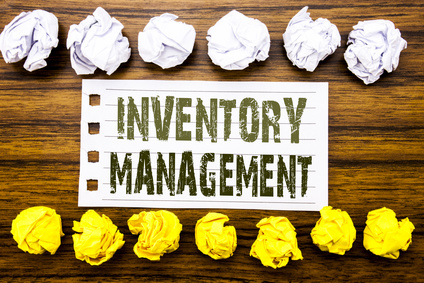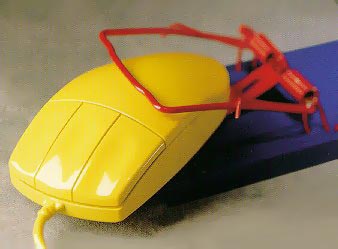Stocktake – A Practical Guide to Inventory Counts
A stocktake is the act of counting and recording the quantities of goods in stock to compare the results with available inventory data and find discrepancies. It is a crucial part of any business that holds inventory and that is why the process of performing a stocktake needs to be rigorously organized.

You can also listen to this article:
What is a Stocktake?
A stocktake, also called an inventory count, is the act of counting and recording the inventory items your company currently has on hand. This is done to check whether the numbers match the data in your inventory management system as well as to identify inventory shrinkage. As such, it is a crucial part of any business that deals with the manufacture and/or sale of products.
Why is Stocktaking important?
Generally, inventory management specialists do not need an explanation as to why stocktakes are important. Sometimes, however, people get the impression that if there is an inventory management software in place, stocktakes are not needed anymore. The truth is that regardless of whether high-grade software is used for inventory tracking or not, inventory counts are still required (although perhaps less frequently to maintain a healthy inventory. Here are some of the best reasons why stocktakes are important.
1. Inventory accuracy
Even though the use of inventory management software, barcode scanners, and other digital tools eliminate much of the human error prevalent in manual inventory tracking methods, there is still a chance that something is left unscanned or overlooked. Having a two-tier system with inventory software and periodic stocktakes, however, allows businesses to make sure that their inventory data is accurate and reflects the actual situation in the warehouse. Regularly finding discrepancies might mean that employees need more training.
2. Identify shrinkage
Even though your inventory management system, whether it is a spreadsheet or dedicated software, will tell you how many items you should have in stock, the real numbers might be different. One of the reasons for that could be inventory shrinkage or dead stock, i.e. goods that are damaged, obsolete, etc. And performing a stocktake is sometimes the only way to find out about it. Finding damaged goods in the inventory also gives you the chance to fix poor storage conditions or improve employee training, which are often the main culprits for damaged stock. Discovering stock with an expiration date that has already passed, or unsold items whose demand has dropped to zero can point to sub-par inventory optimization and tracking.
3. Discover and prevent theft
Another part of inventory shrinkage is made up of stolen goods. Sometimes, there are discrepancies between the numbers recorded in the inventory management system and those gotten with a stocktake. When those discrepancies cannot be explained by looking at the sales or manufacturing records and discovering that some inventory movements have just been left unrecorded, it can point to theft in the facility. Always make sure it really was theft before starting to accuse someone because sometimes it can also be due to employees disposing of damaged goods without writing them off.
Other than helping to discover theft in the facility, regular stocktakes also prevent theft. When everybody in the facility knows that stock is frequently counted, it might shy people away from attempting to steal.
4. Iron-clad accounting
Inaccurate inventory records lead to an inaccurate profit and loss statement, which may lead to penalties in case of an audit. These inaccuracies can stem from either overstated inventory or understated inventory.
Inventory records can be inflated in case of theft, damages, undiscovered obsolescence, or data entry errors, as well as in case of intentional fraud, when the numbers show there are more items in stock than the actual stock count determines there are. This lowers the Cost of Goods Sold (COGS), providing you with an overstated net income and gross profit.
Understated inventory records, however, show that there are fewer items in inventory than there actually are, which increases the COGS and provides you with an understated net income and gross profit.
Under- or overstating your inventory records, therefore, has a direct impact on the company’s income statement and tax records.
5. Inventory organization
Stocktakes also allow for better warehouse organization by helping you identify misplaced goods and return them to their assigned location. It is also a good idea to make adjustments to how items are placed onto the shelves or racks while doing a stocktake. This way, you can avoid something falling down from the shelves and becoming damaged, or worse, hurting someone.
Full physical count vs. cycle count
There are a couple of key approaches to stocktakes: a full physical count and cycle counting. A full physical count, also known as a wall-to-wall count, means counting the whole inventory all at once. This means daily operations need to be shut down for the stocktake, which may signify many lost business hours. That is why many companies that perform full physical counts do it after the facility is closed for the day. For companies that operate 24/7, however, this approach may prove to be highly disruptive, especially when stocktakes are done frequently.
Another method of stocktaking is the cycle count. During a cycle count, only a part of the total inventory is counted at a time, meaning that operations can continue without much disruption, with only some of the stock-keeping units affected. To further minimize disruption caused by the stocktake, it would be feasible to choose items to be included in a single count by their location in the warehouse. You can also use ABC analysis to determine which items are more valuable to the business and therefore require more frequent counts.
Step-by-step process of a Stocktake
Executing a perfect stocktake is not possible without establishing clear procedures and planning the whole process out. Here are the steps required to conduct one.
Preparations for the Stocktake
Before conducting a stocktake, whether it is a full physical count or a cycle count, some preparation has to be done:
- Set the date(s) and determine the inventory to be counted. For a wall-to-wall count, this is a simple task. But in the case of cycle counting, create a schedule for counting different parts of your inventory. On average, it is recommended to count every SKU on a quarterly basis. Of course, you may deem some items worthy of more frequent checks, and some that can be checked once every six months. Use ABC analysis to see which items merit more frequent counts.
- Assign an employee to be in charge of the count. This way, you will establish a concrete chain of command and avoid roles getting mixed up.
- Assign roles to other inventory staff. Create teams of two or three employees: one to count, one to record the numbers, and another one (if necessary) to operate a forklift or other inventory machinery. Assign each team an area or SKUs to count.
- Set a time when operations related to the inventory to be counted must be ceased.
- Inform and instruct the staff regarding their duties during the stocktake.
- Prepare the tools necessary for performing the stocktake. This includes everything from pens and stocktaking sheets to barcode scanners, tablets, and scales.
- Make sure that the warehouse is clean and tidy, and that pallets are standardized, i.e. each pallet holds only one type of item, preferably in the same quantity.
Performing the Stocktake
To ensure a smooth and accurate count, it is also necessary to follow the previous protocol during the day of the stocktake:
- Shut down operations. During a full count, all operations within the warehouse need to be ceased. No inventory movements, neither incoming nor outgoing, should be recorded during the count. In the case of cycle counting, only the operations related to the specific SKUs should be stopped.
- Have the previously assigned teams count the inventory within their jurisdiction. Make sure that they pay attention to any loose packages, counting every item in the package separately or weighing the packages.
- Have the teams inspect the goods for any dead stock. Damaged or expired goods should be recorded separately.
- Mark the pallets, racks, or areas that have been counted with a colored label or marking previously agreed upon.
- Have all team members sign the count sheets so that they all would take responsibility for the accuracy of the stocktake.
- After the counts have been conducted, have the employee overseeing the stocktake compare the numbers on the count sheets to those in the inventory management system. In case of notable discrepancies, the affected items should be thoroughly recounted. If the discrepancies remain after a double count, the causes need to be investigated.
Stocktake discrepancy causes
There are many reasons why a stocktake might provide results that do not match the inventory data. Some of the most common causes for discrepancies are:
- Misplaced or mixed-up items
- Incorrectly labeled inventory
- Shrinkage due to damage, obsolescence, or theft
- Incorrect unit of measurement used when counting the stock
- Outstanding orders that have yet to be picked
- Incorrect or insufficient data recorded in the system
- Uncalibrated scales or other faulty stocktake equipment
- Faulty and outdated inventory management system
Key takeaways
- A stocktake is the act of counting and recording the items in stock to check for any discrepancies.
- Inventory counts are required in every business that carries stock, regardless of how well the company uses its inventory management system.
- Stocktakes help ensure inventory data accuracy; detect shrinkage due to theft, obsolescence, or damage; keep the balance sheet accurate and your facility in good shape physically.
- Instead of full inventory counts, companies sometimes opt for cycle counting their inventory. Cycle counts are performed on a small variety of SKUs at a time, making the stocktaking process less disruptive to the business.
- Preparations for doing a stocktake include: setting the date, time, and inventory to be counted; assigning roles to the employees and instructing them regarding their tasks; preparing the tools required during a stocktake; making sure that the warehouse is tidy and the items are organized properly.
- During the stocktake, it is necessary to: shut down operations related to the SKUs being counted; count every item, including units in loose packages; have the teams check the items for damage, recording damaged goods separately; mark the areas and pallets that have been counted; have all team members sign their stocktake sheets; compare the numbers with inventory data, recount if necessary, and investigate the causes of discrepancies.
- Some of the most common causes for discrepancies are: misplaced or mixed-up items, incorrectly labeled inventory, shrinkage, mismatched units of measurement, unpicked outstanding orders, data entry errors, faulty stocktake equipment, and an outdated inventory management system.
- Some possible errors in the organization: attempting to count at one or some shelves or locations only, mixing counting and analysis of results, editing stock levels in the software system without proper investigation of the discrepancies.
You may also like: What Is Vendor-Managed Inventory (VMI) and How to Use It?




